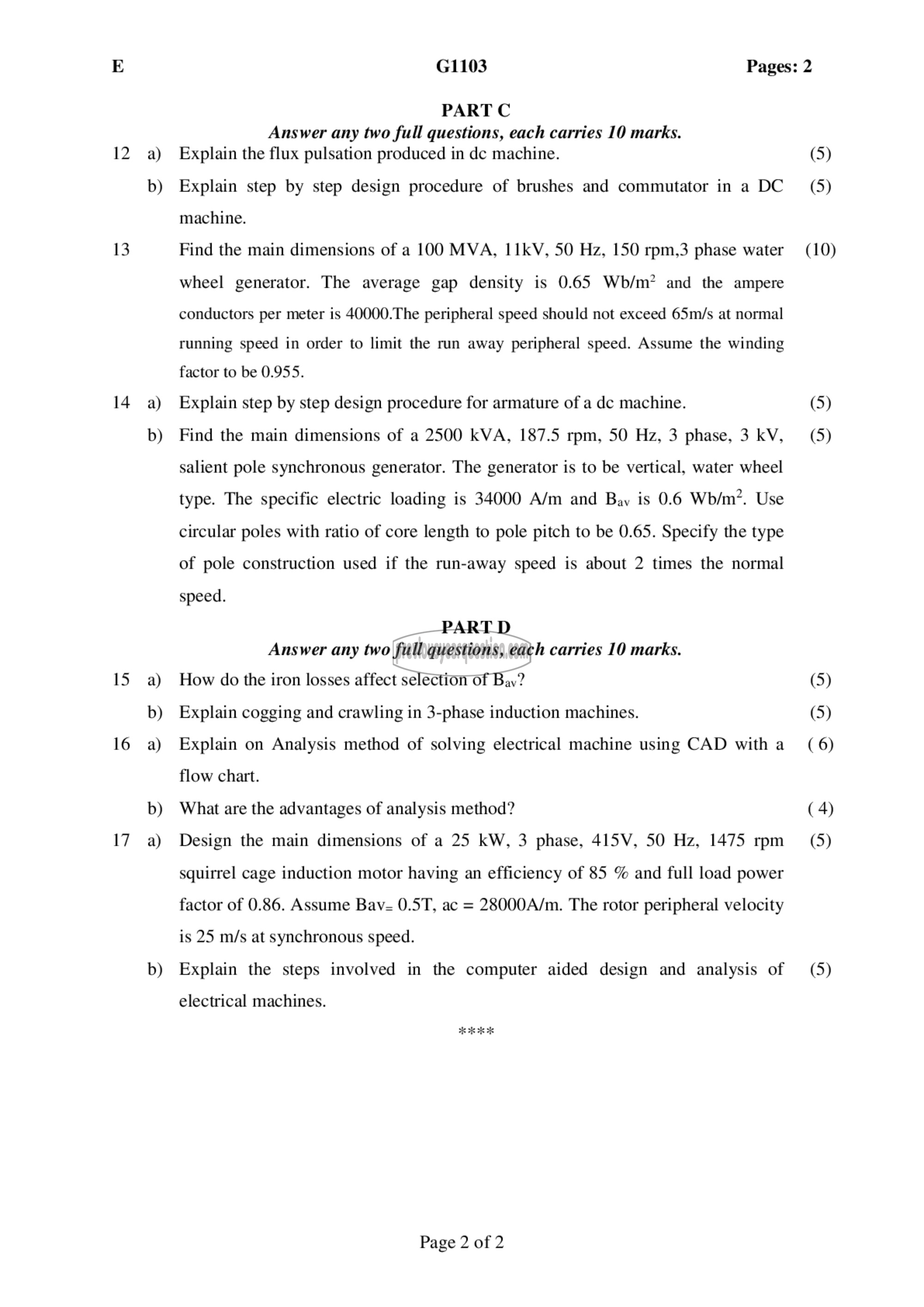APJ ABDUL KALAM TECHNOLOGICAL UNIVERSITY Previous Years Question Paper & Answer
Semester : SEMESTER 7
Subject : Electrical Machine Design
Year : 2019
Term : MAY
Scheme : 2015 Full Time
Course Code : EE 409
Page:2
12 a)
b)
13
14 a)
b)
15 a)
b)
16 a)
b)
17 ஐ
b)
G1103 Pages:
PART ட்
Answer any two full questions, each carries 10 marks.
Explain the flux pulsation produced in de machine.
Explain step by step design procedure of brushes and commutator in a DC
machine.
Find the main dimensions of a 100 MVA, 1111۷, 50 Hz, 150 rpm,3 phase water
wheel generator. The average gap density is 0.65 Wb/m? and the ampere
conductors per meter is 40000.The peripheral speed should not exceed 65m/s at normal
running speed in order to limit the run away peripheral speed. Assume the winding
factor to be 0.955.
Explain step by step design procedure for armature of a dc machine.
Find the main dimensions of a 2500 kVA, 187.5 rpm, 50 Hz, 3 phase, 3 kV,
salient pole synchronous generator. The generator is to be vertical, water wheel
type. The specific electric loading is 34000 A/m and Bay is 0.6 Wb/m?. Use
circular poles with ratio of core length to pole pitch to be 0.65. Specify the type
of pole construction used if the run-away speed is about 2 times the normal
speed.
PARTD
Answer any two full questions, each carries 10 marks.
How do the iron losses affect selection of Bay?
Explain cogging and crawling in 3-phase induction machines.
Explain on Analysis method of solving electrical machine using CAD with a
flow chart.
What are the advantages of analysis method?
Design the main dimensions of a 25 kW, 3 phase, 415V, 50 Hz, 1475 rpm
squirrel cage induction motor having an efficiency of 85 % and full load power
factor of 0.86. Assume Bav-= 0.57, ac = 28000A/m. The rotor peripheral velocity
is 25 m/s at synchronous speed.
Explain the steps involved in the computer aided design and analysis of
electrical machines.
Page 2 of 2
(5)
(5)
(5)
(5)
(6)
(4)
(5)
(5)
